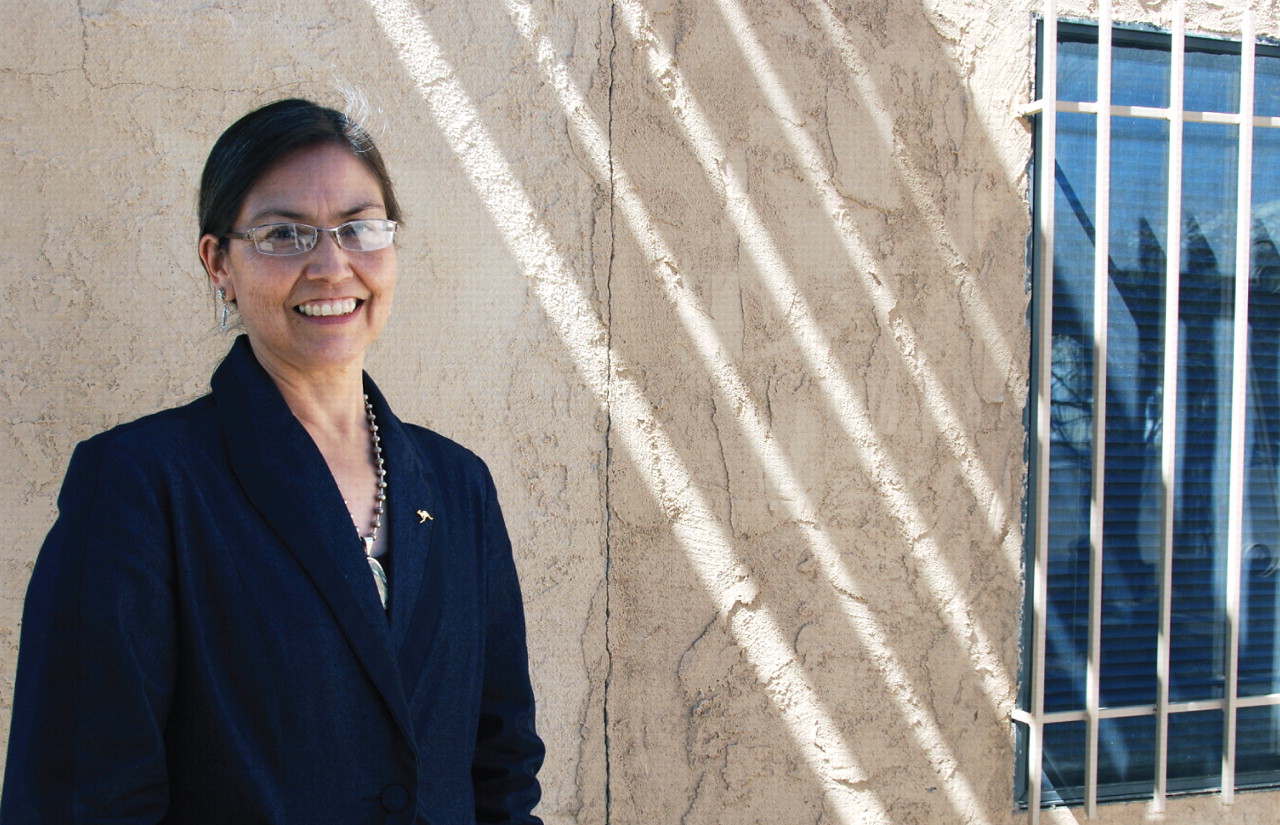Patients Benefit From Merged Traditions
I lived in two parallel worlds,” said Lewis Mehl-Madrona M.D., Ph.D., a psychiatrist and an associate professor of family medicine and psychiatry at the University of Saskatchewan.
Those worlds were not just of place and time, but of history and culture, as Mehl-Madrona and other American-Indian psychiatrists know.
Crossing back and forth from one culture to another is hardly uncommon for anyone, like immigrants and members of minority groups, who, by choice or necessity, have spent parts of their lives as participants in more than one society.
For Mehl-Madrona, one world (his right brain) was indigenous and ceremonial, a tie to his American-Indian ethnicity, said Mehl-Madrona, who is of Cherokee and Lakota ancestry, in an interview. It remained in his mind even as his rational left brain kept him on the job in emergency medicine for 27 years. In the ER, things were cut and dried, he said; there was no question of what to do next.
That conflict was reflected in his ambivalence about a choice of specialty. He considered psychiatry after graduating from Stanford Medical School in 1975, but his relationship to the field had an approach-avoidance quality. His psychiatry residency stretched over 20 years at three institutions, interspersed with a family medicine residency, the years in the ER, and a Ph.D. in psychology in 1980.
Over time, though, he managed to integrate the two halves of his mind and his career. His experience in two cultures has helped him no matter who his patient may be.
“Too many times, medical people—including psychiatrists—say: 'We know it all. Listen to us. It'll be fine,'” he said. “That leads to resentment. The patient feels unimportant and stubborn, and [is] ultimately noncompliant.”
Indigenous communities ask one thing of mental health workers, he said:“ Listen. Allow us to be separate but different.”
Newcomers should not assume they know everything. Find an older mentor within the community to help learn about the community, its healing practices, and its values, urged Mehl-Madrona.

Mary Hasbah Roessel, M.D., embodies overlapping cultures. She is a staff psychiatrist at the Santa Fe Indian Health Services Hospital and Clinic in Santa Fe, N.M., and the granddaughter of a traditional Navajo healer.
Credit: Aaron Levin
“If you watch how elders work, you'll see it's entirely through stories,” he said. “People like that approach.”
After all, many forms of psychotherapy, from psychoanalysis to cognitive-behavioral therapy, depend on narratives, so they are not so far from native traditions, he said.
Nor are native traditions far removed from a biopsychosocial model. As a former ER doctor, he was puzzled by the old analytic model of avoidance of the body.
“It was not easy for me,” he said. “Now, it's easy to use drugs, but if you don't intervene in other ways, the patient will be back in two months. Social intervention is critical. If not, society overpowers the drugs.”
Mary Roessel, M.D., has also spent a life and a career moving back and forth across similar boundaries. Her interest in psychiatry was planted early. She grew up on Navajo reservations in Arizona, the daughter of two teachers. Her mother was Navajo, her father was not. Her parents met Karl Menninger, M.D., at a conference, and he later visited the family on the reservation. Menninger wrote about the connection between Navajo healing and psychiatry and even declared that the Navajos were the first psychiatrists, said Roessel. He encouraged her interests in science, as well.
Roessel thought about veterinary school, but later chose medical school at the University of Minnesota. She first considered family medicine as a possible specialty, drawn to it as a way of being of service.
“But after a psychiatry rotation in my third year, I felt that psychiatry was a more holistic way of dealing with people, like the Navajo culture,” she said.
Today she is based at the Santa Fe, N.M., Indian Hospital but spends several days a month at the Santa Clara and Santa Domingo pueblos. There she attends clinics, makes some home visits, and trains tribal staff members.
Adapting contemporary psychiatry to another culture is more complex than simply pushing a switch, she said.
“It means thinking about patients' culture of origin, their language, and how they identify themselves,” she said. “How do they look at their illness from both medical and cultural perspectives?”
Knowing the long view of history is critical, too. The physical destruction and dislocation of American Indians in the 19th century may be known to most non-Indians. However, a variety of policies of the 20th century, like the boarding school system that removed children from their homes, left many Indians adrift, stripped of their culture and caught in a pattern of ongoing intergenerational trauma, she said.
With that in the background of every conversation, patients frequently find it a relief to talk to someone like Roessel, who shares their perspective on the world. In fact, 75 percent will see a traditional healer first before coming to a psychiatrist, she said.
Roessel also takes a long-term view of improving access to medical and psychiatric care for the population she serves. She makes presentations at local high schools on science and medicine and mentors students through the Association of American Indian Physicians.
Having a foot in two worlds coupled with a desire to help patients sustained her through rough patches in medical school, and does so today, she said. “I can see both the Navajo and the Western points of view, and that has given me a more holistic world view and made me more accepting of people's differences.” ▪



